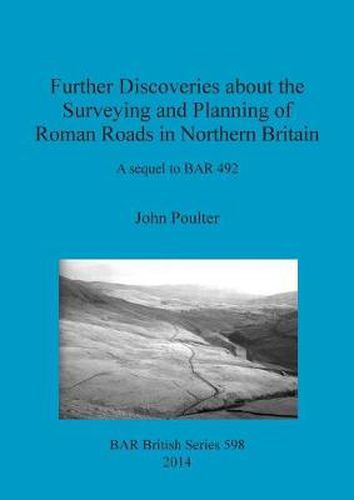Readings Newsletter
Become a Readings Member to make your shopping experience even easier.
Sign in or sign up for free!
You’re not far away from qualifying for FREE standard shipping within Australia
You’ve qualified for FREE standard shipping within Australia
The cart is loading…






This title is printed to order. This book may have been self-published. If so, we cannot guarantee the quality of the content. In the main most books will have gone through the editing process however some may not. We therefore suggest that you be aware of this before ordering this book. If in doubt check either the author or publisher’s details as we are unable to accept any returns unless they are faulty. Please contact us if you have any questions.
The research reported in this monograph follows on directly from the findings that were reported in BAR 492, in which, among many other discoveries, the author recognised that the courses of both Roman Dere Street and Hadrian’s Wall had been underpinned by frameworks of long-distance alignments. Stimulated by the detection of several more of these alignments across northern England by another researcher, Robert Entwistle, the author, who is a chartered engineer as well as an archaeologist, seeks to examine why, how, and when such long-distance alignments may have been laid out. Consideration is then given to the processes by which some of these alignments seem subsequently to have been adopted to help set out the courses of Roman roads. These processes are shown, at times, to have been far from straightforward, and this appears to offer an explanation for many of the minor divergences that Roman roads, as built, take from such alignments in practice. The courses of four well-known Roman roads in Northern England are then examined in detail to diagnose the processes by which they are likely to have been planned and laid out. These roads are the Western Main Road from Manchester northwards through the Lune Gorge, the Maiden Way, the network of cross-country roads from Kirkham to Aldborough, and the Devil’s Causeway.
$9.00 standard shipping within Australia
FREE standard shipping within Australia for orders over $100.00
Express & International shipping calculated at checkout
This title is printed to order. This book may have been self-published. If so, we cannot guarantee the quality of the content. In the main most books will have gone through the editing process however some may not. We therefore suggest that you be aware of this before ordering this book. If in doubt check either the author or publisher’s details as we are unable to accept any returns unless they are faulty. Please contact us if you have any questions.
The research reported in this monograph follows on directly from the findings that were reported in BAR 492, in which, among many other discoveries, the author recognised that the courses of both Roman Dere Street and Hadrian’s Wall had been underpinned by frameworks of long-distance alignments. Stimulated by the detection of several more of these alignments across northern England by another researcher, Robert Entwistle, the author, who is a chartered engineer as well as an archaeologist, seeks to examine why, how, and when such long-distance alignments may have been laid out. Consideration is then given to the processes by which some of these alignments seem subsequently to have been adopted to help set out the courses of Roman roads. These processes are shown, at times, to have been far from straightforward, and this appears to offer an explanation for many of the minor divergences that Roman roads, as built, take from such alignments in practice. The courses of four well-known Roman roads in Northern England are then examined in detail to diagnose the processes by which they are likely to have been planned and laid out. These roads are the Western Main Road from Manchester northwards through the Lune Gorge, the Maiden Way, the network of cross-country roads from Kirkham to Aldborough, and the Devil’s Causeway.